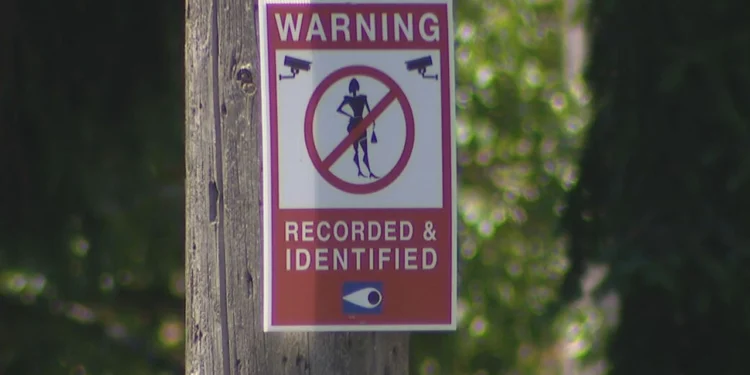The city of Seattle is trying a new strategy to deter people from soliciting prostitutes on Aurora Avenue North: sending warning letters to the registered owners of vehicles observed engaging with sex workers.
“Essentially, it’s an education and awareness campaign,” said Natalie Walton-Anderson, Chief of Public Safety for Seattle Mayor Bruce Harrell. “The goal here, realistically, is to deter and interrupt the demand that exists … we have to have approaches to deter and send a message that we will not tolerate people who come here to prey upon people and buy sex. It’s a crime.”
The “John Letters” will be issued by detectives with the department’s Human Trafficking Unit who observe the vehicle involved in suspected patronizing of a sex worker. The letters are not criminal charges and do not carry any penalty.
“The purpose of this letter is to serve as a warning to you that persons operating your vehicle were engaged in suspected sexual exploitation activity,” the letter states. “SPD is not accusing you of a crime, and no criminal charges will follow based on this incident. If you or someone you know needs help to stop sexual exploitation activity, there are non-profit organizations that may be able to assist.”
Seattle is not the first large city to try the approach of sending letters to the homes of suspected sex buyers. Last year, the city of San Francisco launched a ‘Dear John’ program to send letters and pictures to the addresses of cars seen involved in soliciting sex workers.
According to a survey of sex buyers completed by the National Center of Sexual Exploitation, 75% of respondents indicated that a letter being sent to their homes or families would deter them from engaging with prostitutes.
Walton-Anderson adds that the letters will not replace traditional enforcement actions by Seattle police. “The focus of this initiative is not necessarily to solve trafficking, it’s to add another tool,” she said.
This year, the city of Seattle has announced $7.5 million in investments to services for survivors of sex trafficking, an 83% increase since 2022. Those funds pay for housing, emergency shelter, support groups, and therapy for survivors.
In 2024, the city council passed an ordinance authorizing the use of Stay Out of Area of Prostitution (SOAP) orders for people who are arrested for soliciting sex workers.
Since January, Seattle police have made 18 arrests for sexual exploitation along Aurora Avenue during sting operations. The city says each sting operation requires between 15 and 20 officers to complete.
“It’s going to take a multitude of strategies to address trafficking that is going on around Aurora,” Walton-Anderson said.
In the last year, multiple pimps have received lengthy prison sentences for trafficking women on Aurora Avenue. Winston Burt, also known as ‘Dice Capone’, received a 15-year sentence for sex trafficking and engaging in a shootout with an Uber driver who was helping one of his girls escape. Cedric Dorsey III, who went by the name “CCC Cash Cashen Ced,” was sentenced to 35 years in prison after being convicted on charges of human trafficking and promoting prostitution.
The warning letter strategy targets demand reduction, a key component of anti-trafficking efforts that seeks to decrease buyer activity rather than solely focusing on arresting sex workers or traffickers. The approach acknowledges that reducing demand can help decrease the profitability of sex trafficking operations.
The letters’ effectiveness relies on the threat of social exposure, buyers fearing spouses, family members, or others at their residence discovering their activities. However, the strategy has limitations when vehicles are registered to businesses, rental companies, or addresses where the actual buyer doesn’t reside.
The resource-intensive nature of sting operations, requiring 15 to 20 officers for each operation, makes warning letters an attractive supplemental strategy that can be deployed more broadly with fewer resources while maintaining a deterrent presence.
Aurora Avenue North has long been Seattle’s most visible prostitution corridor, with activity concentrated in areas where motels and commercial strips provide opportunities for quick transactions. The corridor’s reputation attracts buyers from throughout the region.







